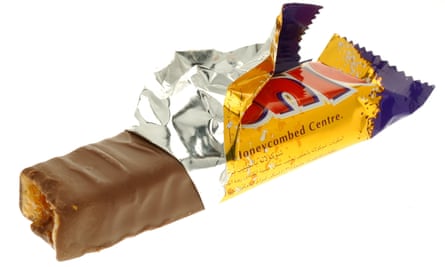Online sleuths have set about trying to guess the exact age of a Crunchie wrapper that was found in a library – with a few crumbs left inside.
A worker at Cambridge University Library made the discovery last week while taking down some bookshelves, with the university saying it was probably stashed behind some books and fell down behind.
The orange packaging and the price of sixpence indicates that it was produced before 1971, when decimalisation was introduced.
But the precise date is the source of online guesswork, with Facebook and X users quick to share theories.
One gave an estimate of between late 1965 and early 1967, noting that the “bigger, same price” promotion written on the wrapper, with the bar priced at “6d”, was announced in September 1965. “In July 1966, Fry’s had to pay a £300 fine after Oxford weights and measures inspectors determined that earlier bars had actually been bigger than the new ‘bigger’ bars. And by mid-1967 the list price was 7d,” they said.

Others dated the wrapper back to the 1950s, with one user sharing a Fry’s poster from that era that advertised the chocolate bar at 6d.
The Crunchie, a chocolate bar with a honeycomb filling, became part of the Cadbury’s range in 1988, 59 years after it was introduced by Fry and Sons.
A tongue in cheek Facebook post by the library asked the culprit to “fess up” if they remembered eating and then hiding the wrapper among the books.
Lizzie Woodman, the library’s social media coordinator, said: “The workman wasn’t expecting to find anything like that. It was in such good condition. It looked like it had been put there yesterday.”
Cambridge has one of the world’s oldest university libraries. With it housing a physical collection of nearly 10m books, maps, manuscripts, photographs and objects, it was fairly usual to find remnants from the past, Woodman said.
“With millions of books and nearly 130 miles of bookshelves, it’s not surprising that things sometimes stay hidden for so long,” said Woodman.
Source: theguardian.com


